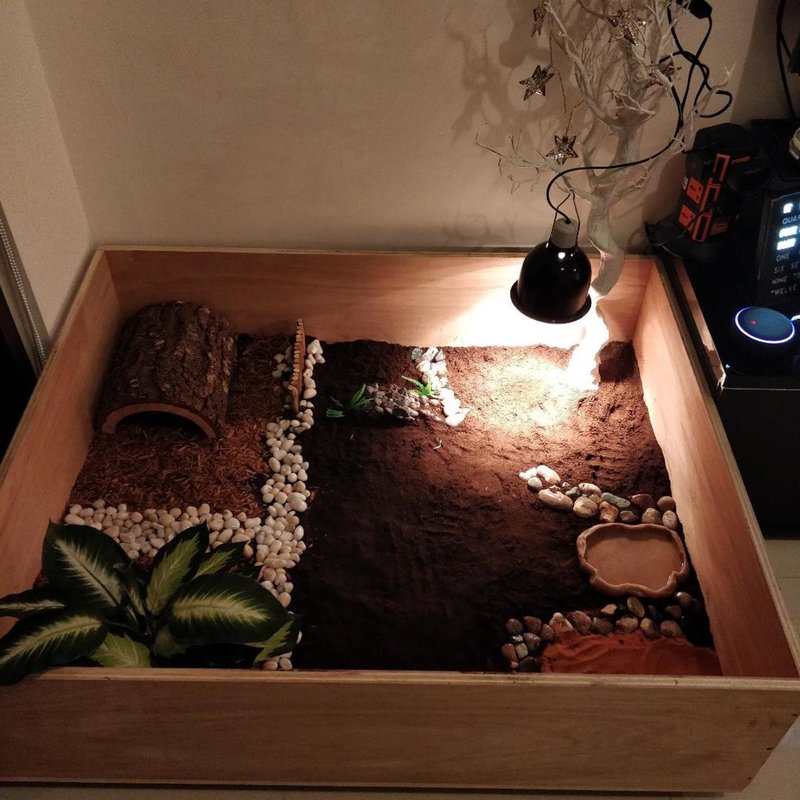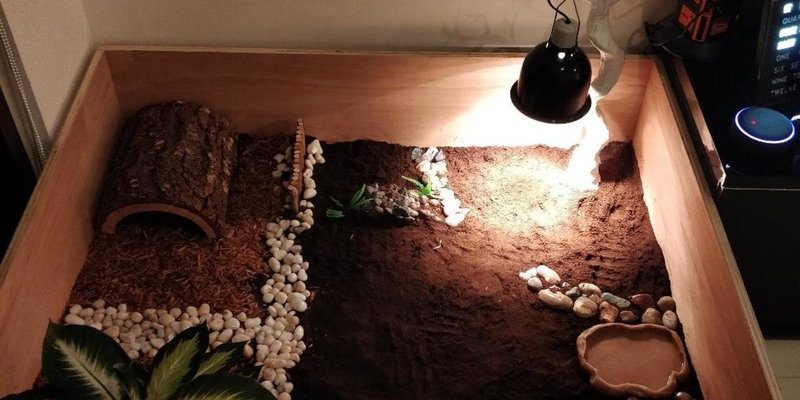
Choosing the Right Size Enclosure
Size matters when it comes to housing a marginated tortoise. These little guys can grow quite large, reaching up to a foot in length. Therefore, you’ll want to ensure their enclosure offers plenty of room to roam. A general rule of thumb is to start with an enclosure that’s at least 4 feet by 2 feet for a single tortoise.
If you’re lucky enough to have more than one tortoise, you’ll need to increase the size accordingly. For every additional tortoise, add at least 2 feet to either dimension. Think of it like giving your tortoise their own little kingdom—lots of space to explore and check out new spots for their favorite basking rock or a shady hideout.
Indoor vs. Outdoor Enclosures
You might be wondering whether to house your tortoise indoors or outdoors. Both options have their benefits. Indoor enclosures are easier to regulate when it comes to temperature and humidity, making it a safer choice for tortoises living in colder climates. You can use large plastic bins, terrariums, or even self-built enclosures that cater to their needs.
On the flip side, outdoor enclosures can provide more natural sunlight and give your tortoise the chance to stretch their legs more freely. If you go this route, make sure your yard is secure and free from predators. Adding a simple fence can create a safe space for your tortoise to wander while enjoying the fresh air and sunshine.
Substrate: What To Use
Choosing the right substrate is crucial for your tortoise’s health. This is the material that lines the bottom of their enclosure, and it should be something that allows for burrowing, absorbs moisture, and promotes natural behaviors. A popular choice is a mix of topsoil and coconut coir. This combo not only mimics their natural habitat but also helps with humidity levels.
Another great option is aspen shavings. They’re lightweight, easy to clean, and provide a nice surface for your tortoise to walk on. Just avoid using sand or gravel, as these can cause digestive issues if ingested. Remember, your goal is to create a safe, comfortable environment for your tortoise that also caters to their natural instincts.
Maintaining Proper Temperature and Humidity
Now that you have the right substrate, let’s talk about temperature and humidity. Marginated tortoises thrive in warm conditions, so it’s essential to maintain a basking area between 90°F and 100°F (32°C to 38°C). You can achieve this with heat lamps or ceramic heaters. The rest of the enclosure should be kept cooler, around 75°F to 80°F (24°C to 27°C), giving them a comfortable gradient to choose from.
As for humidity, aim for levels between 40% and 60%. You can check this easily with a hygrometer. If the humidity dips too low, consider adding a small water dish or lightly misting the substrate. Think of it like creating a little weather system inside your tortoise’s home!
Decor and Enrichment
Let’s not forget about the fun stuff! Your tortoise’s enclosure should include decor that encourages their natural behaviors. Incorporate rocks, hides, and plants that provide shade and texture. You can easily build a tortoise hideout using stones or logs—just ensure they’re clean and safe.
Adding plants can also bring life to their enclosure. Opt for non-toxic varieties like dandelion or clover. These serve as both decoration and a tasty snack! It’s all about creating an engaging environment where your tortoise can play, explore, and feel secure.
Water and Feeding Stations
You might be surprised at how important water is in your tortoise’s setup. Always include a shallow dish for drinking and soaking. Marginated tortoises often enjoy soaking in water to help with hydration, so a small pool can be a bonus! Just make sure it’s shallow enough for them to climb in and out safely.
When it comes to feeding, you can use a shallow dish for fresh greens. Leafy greens should make up the bulk of their diet, alongside some flowers and fruits. This keeps mealtime interesting and ensures they get a balanced intake. Just remember to change out the food daily to avoid any funky smells or spoilage.
Regular Maintenance: Keeping Things Clean
Maintaining the enclosure is just as important as setting it up. Regular cleaning helps prevent illness and keeps your tortoise healthy. Start by spot-cleaning daily to remove any waste. A full clean every couple of weeks will also ensure a fresh environment.
During a full clean, you can replace the substrate and wash the enclosure with a mild, reptile-safe cleaner. Keeping things tidy may seem like a chore, but it’s all part of providing a loving home for your tortoise!
Common Issues and Troubleshooting
Even with the best setup, you might run into a few hiccups along the way. For example, if you notice your tortoise isn’t eating or becomes lethargic, check the temperature and humidity levels. Sometimes a simple adjustment to the basking area can solve the problem.
If you’re worried about the enclosure being too dry, make sure you’re providing enough water and misting properly. If things feel overwhelming, know that it’s perfectly fine to reach out to a vet or a tortoise care expert for advice. We’re all learning together, and your tortoise’s well-being should always come first.
Setting up the perfect enclosure for a marginated tortoise might seem a bit daunting at first, but it’s also incredibly rewarding. By focusing on size, substrate, temperature, and decor, you can create a haven where your tortoise feels safe and comfortable.
Remember, it’s about more than just four walls; it’s about crafting an environment that mirrors their natural habitat. With a little love and attention, your tortoise will thrive, live happily, and perhaps even brighten your day with their quirky personality. So grab those supplies, roll up your sleeves, and let’s create a comfortable castle for your shelled friend!

